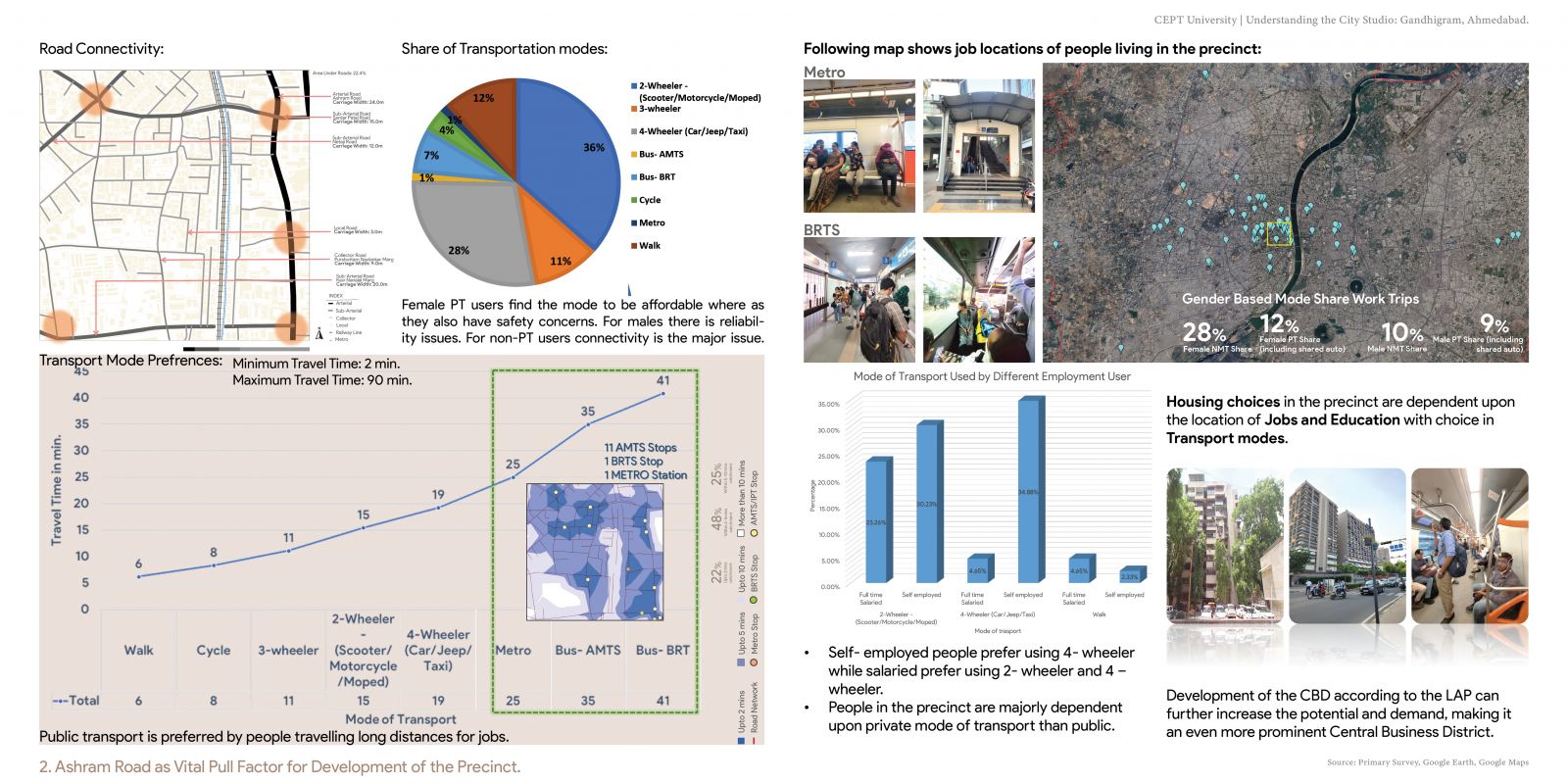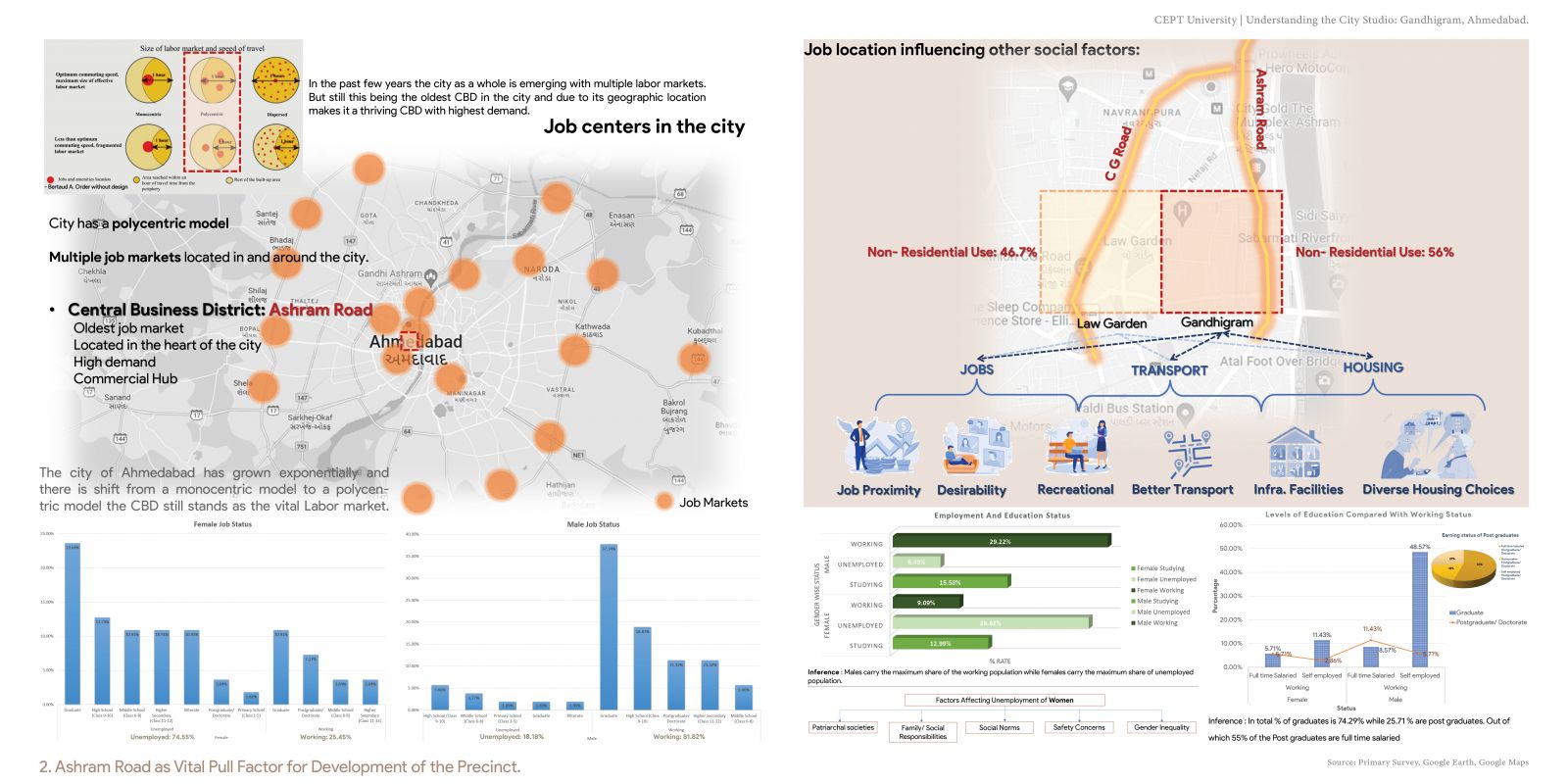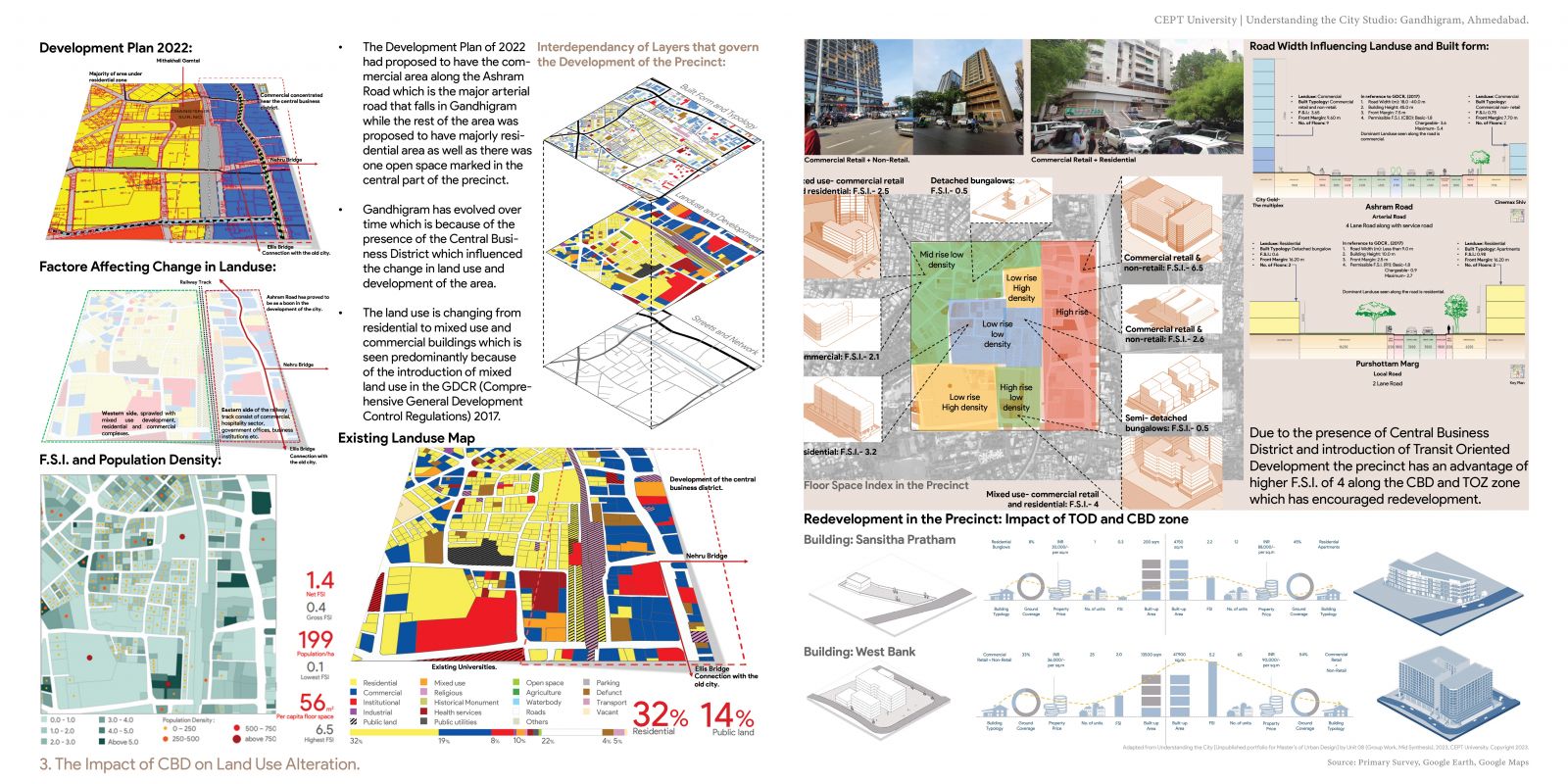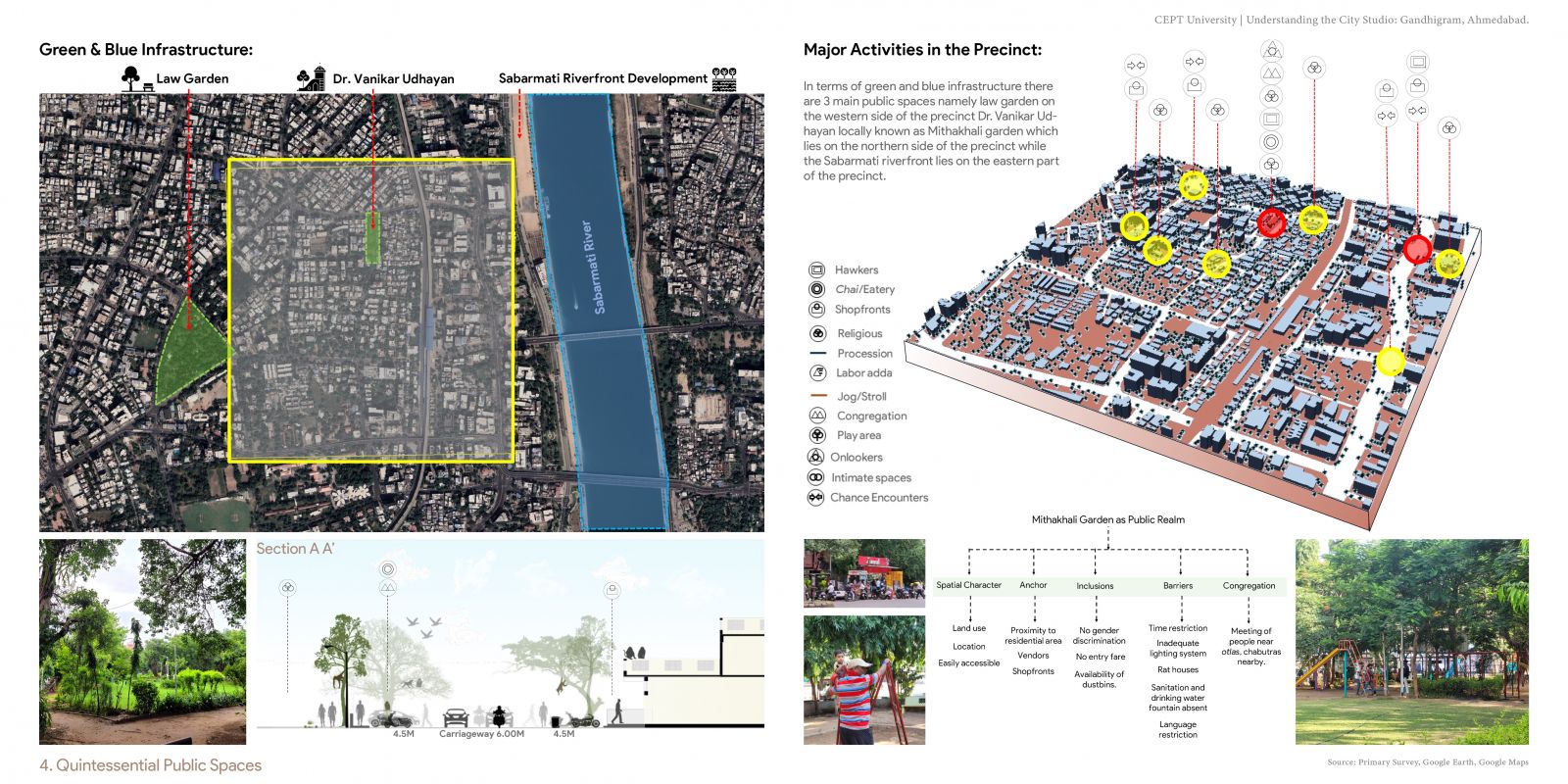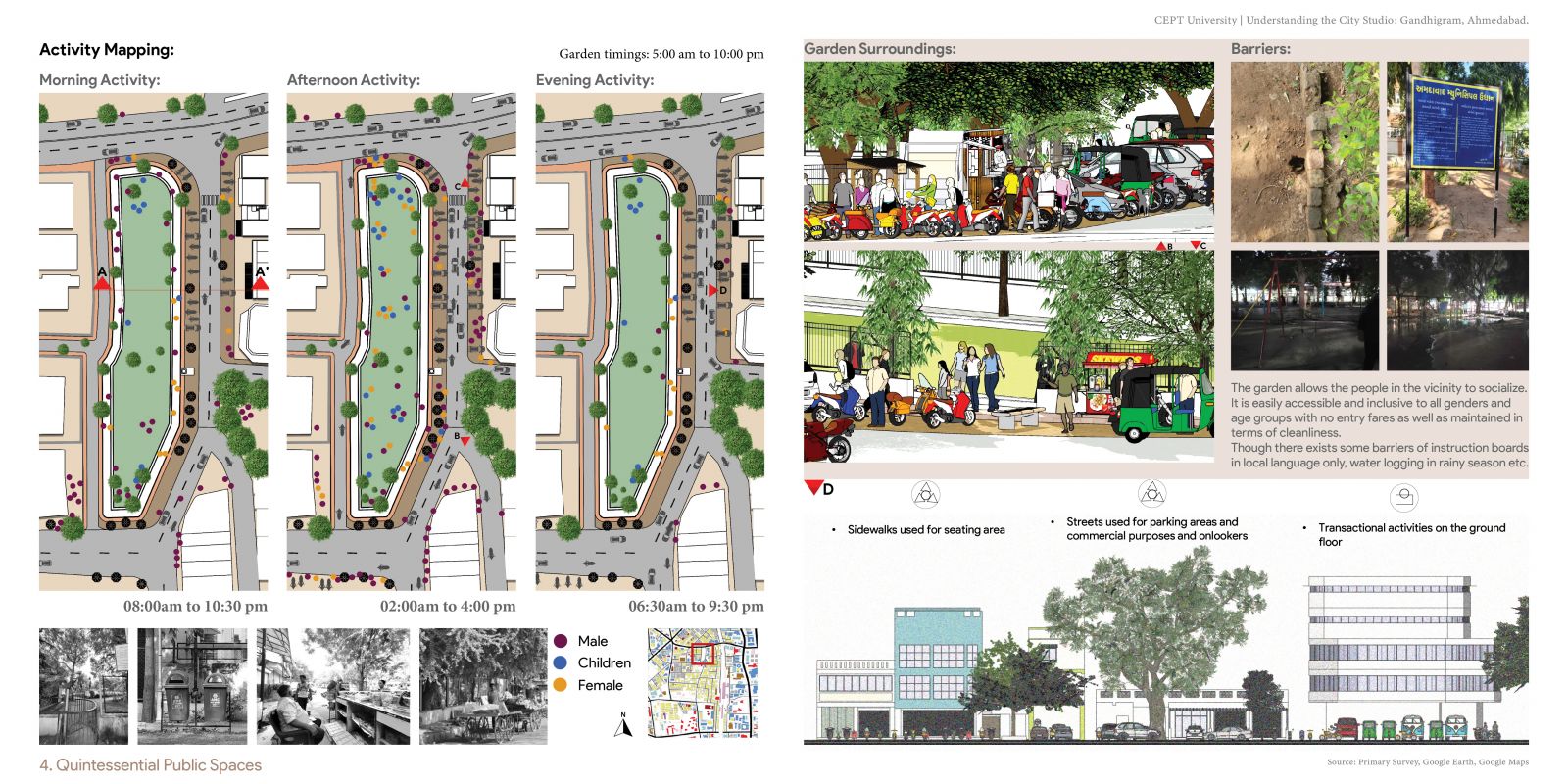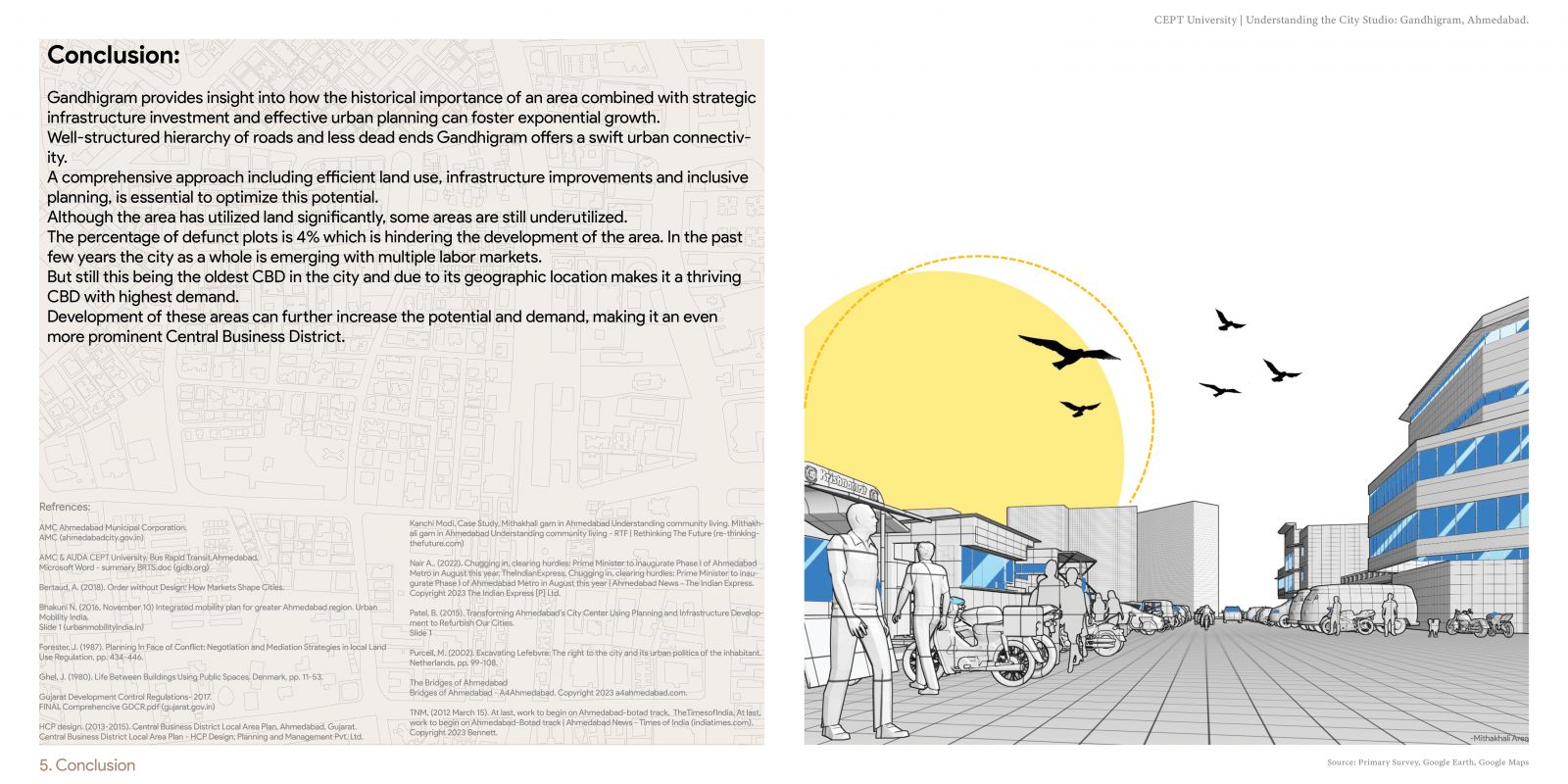- Student MALI APURVA RAMCHANDRA
- Code PUD23052
- Faculty Planning
- Tutor/s Anil kumar Roy,Rutul Joshi,Tarun Patel,Umesh Shurpali,Maulik Chauhan,Arjun Joshi,Rushil Palavajjhala ,Jay Bhanushali,Ravi Sannabhadti,Nitika Bhakuni,Tarunkumar Sharma
Gandhigram is located in the central zone (Ward: Navrangpura, West) of the city of Ahmedabad. The precinct (area bounded in 1 sq.km.) has Sabarmati River Front located on its East, Gujarat Arts and Science College on the South side, public garden (Law Garden) on the West and residential area in the North. The connection of the eastern city to the western city through the bridges (starting from the Ellisbridge) has mainly improved the development of the area. The different layers of Gandhigram have been explained in the following three chapters. The first chapter explains the historical evolution of Gandhigram. The second chapter explains briefly about the streets and road network of the precinct while the third chapter explains the land-use and its impact on the precinct. A part of Central Business District located in Gandhigram has its influence on the surrounding development because of which there is emergence of commercial and mixed land use in the surrounding area. The railway track that cuts through the precinct majorly bifurcates the CBD from the rest residential area with very few roads that connect each other. Which to some extent acts as a barrier in terms of connectivity.Gandhigram provides insight into how the historical importance of an area combined with strategic infrastructure investment and effective urban planning can foster exponential growth. Well-structured hierarchy of roads and less dead ends Gandhigram offers a swift urban connectivity. A comprehensive approach including efficient land use, infrastructure improvements and inclusive planning, is essential to optimize this potential.



